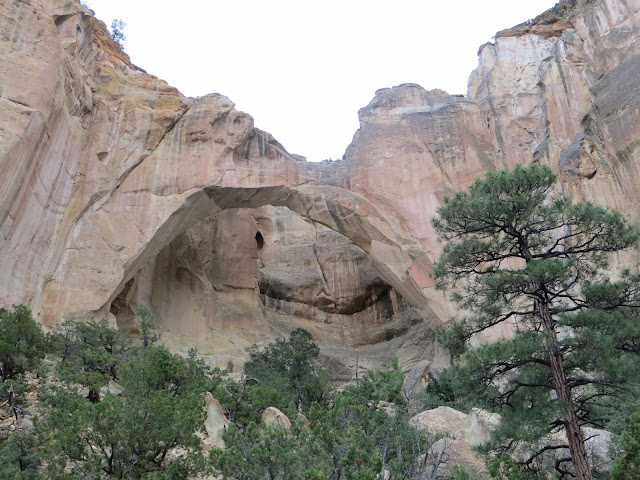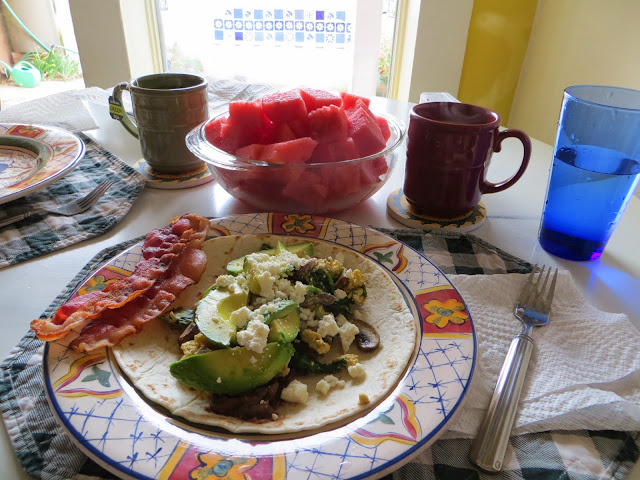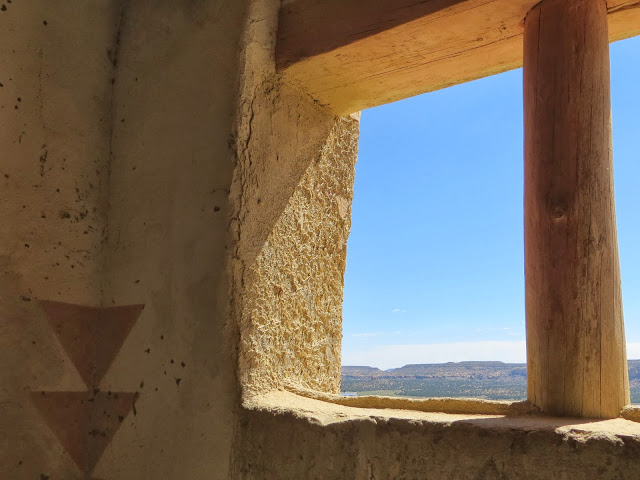I'm getting close to the end of my report on our summer trip to Colorado and New Mexico.
If you missed my other New Mexico posts, check them out first:
- Albuquerque: Settling In and Driving the Turquoise Trail
- A Day Trip to Santa Fe
-
Exploring Albuquerque and Afternoon Tea at St James Tearoom
After our day exploring Albuquerque, we headed west to explore a pueblo and some national monuments.
I couldn't get enough of the huge clear sky. It is amazing how far you can see into the distance. It gives you such a feeling of freedom and like you're somewhere other people haven't been before even though you obviously aren't!
We spent the morning at
Acoma Pueblo, where the Acoma people have lived for over 800 years. In order to visit the pueblo, you must go on a guided tour. Our tour guide was Dakota, who is a member of the Acoma tribe. Dakota told us the story of the pueblo and the history of his people. The tour was informative and heart-breaking.
After living for hundreds of years in peace, Acoma was discovered by the Spanish. The Acoma people were forced to build the
San Esteban Del Rey Mission. According to Dakota, some of their people were buried within the walls of the church to ensure that they would not destroy the structure. That is also why photographs of the church's interior are forbidden. Today, the mission is a National Trust Historic Site and is on the National Register of Historic Places.
 |
| San Esteban del Rey Mission |
Acoma was believed to be one of the "Seven Cities of Gold." During the day, the sun shines on the structures, giving it the sheen and color of gold. Of course, there was no gold here but that didn't stop the Spanish from colonizing the area.
During the tour, we were able to purchase handmade crafts and other items from local artisans. I, of course, had to buy a sopapilla with honey! Look, it has a smiley face!
There are still many structures on the mesa, with many people still calling it home. Traditional ladders lead to religious chambers called kivas.
 |
| Adobo oven |
The view from the mesa was so beautiful. Again, I am obsessed with this sky!
We saw this other mesa in the distance. For some reason, I was trying to imagine if they could communicate with each other. (Hello? Hello!!)
The night before we visited, the area experienced a unusual amount of rainfall, which is why this pool is filled to the brim. Some of the locals said they haven't seen it so full in years.
In the old days, the only access to the mesa was via a hidden staircase that had been carved into the side of the mesa. Dakota said that he could show us the staircase and if we wanted to, we could take it back down the mesa or we could hop back on the shuttle. We opted to take the staircase.
We didn't realize that the staircase was extremely steep and almost vertical, but we were able to manage.
Hiking down the steep and precarious hidden staircase.
I really enjoyed our tour of Acoma Pueblo. It was moving and eye-opening. We headed back to the freeway and onward!
Oh boy, when it came to be lunchtime, we were stuck with few promising options. I really wished we had packed a picnic lunch because that would have been much more enjoyable than the lunchmeat sandwiches we had at
1st St Cafe in Grants. So disgusting.
At least, I got to see more of the gorgeous sky!
The second item on our agenda was
El Morro National Monument. This site served as a stopping point for explorers and travelers for hundreds of years due to a pool of water located at the base of its sandstone bluff.
Thousands of these travelers left their mark on El Morro's
Inscription Rock. The inscriptions date from the 17th century until 1906, when it became illegal to add more carvings. The rock also has petroglyphs that are much older than the inscriptions of European travelers.
The inscriptions included things like names, dates and even descriptions of their travels. It was so fascinating.
I noticed there were spots on the rock that had been sanded out. Apparently, these were made after 1906 and were actively removed as they were considered graffiti/non-historic. El Morro stopped being an important stopping point once the Santa Fe Railroad was constructed.
After viewing the inscriptions, we opted to complete the full 2-mile Headland Trail hike, which takes you to the top of the bluff.
The hike was very peaceful, with only one other couple hiking at the same time as we were.
Near the end of the trail, we came to the ruins of
Atsinna Pueblo. According to the National Park Service, "Between approximately 1275 and 1350 AD, up to 1500 people lived in this 875 room pueblo."
 |
| Ruins of Atsinna Pueblo |
With two super cool things done, we had one last stop before calling it a day. Stayed tuned for more on that!














































